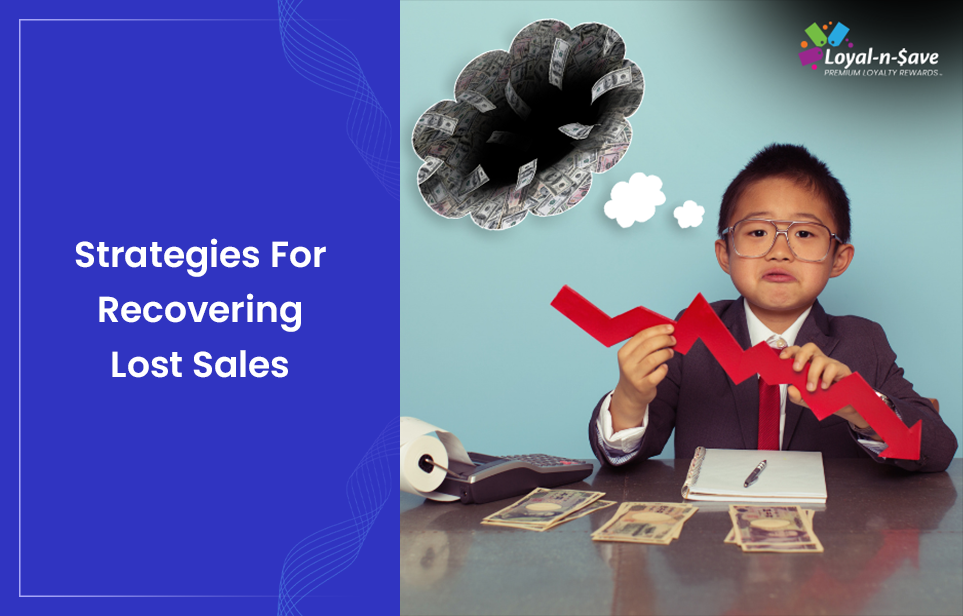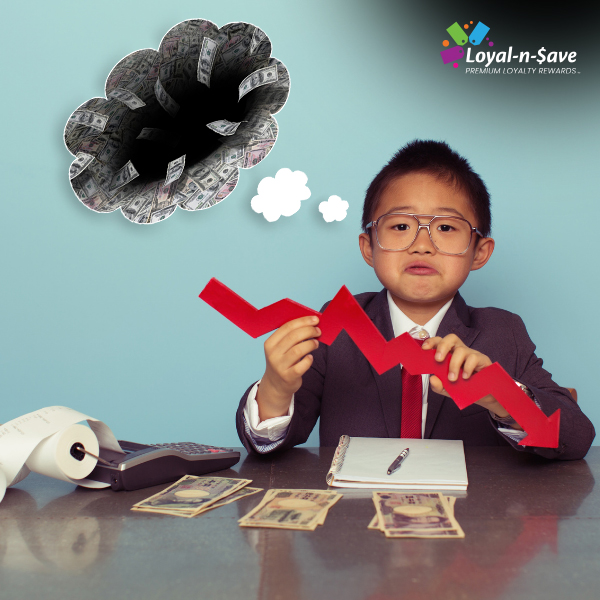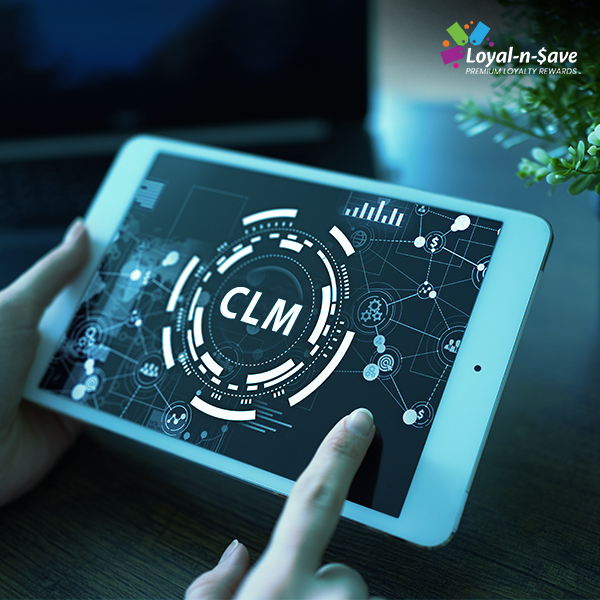Strategies For Recovering Lost Sales

At one point or another, every company has lost sales, if not customers. When customers are unhappy, they take their business elsewhere. It’s that simple. It’s also a manageable part of life unless a substantial portion of interested buyers become turned off before they complete the purchasing process.
If you’re losing a noticeable amount of sales, then you’ve got a problem and it has a name—customer churn.
Customer churn refers to the rate at which paying customers cease to be customers. This metric is measured by tallying the total number of consumers who stopped being customers of your business during a fixed time period. Calculating the churn rate of your customers isn’t entirely cut-and-dry since determining that a customer has in fact abandoned your business is tricky. Oftentimes, customers become inactive and appear lost, but end up coming back due to a positive incentive.
When you start to lose sales, you can expect to lose customers next. Dwindling sales is the biggest sign that customer churn is imminent. Before you comb through your CRM looking for inactive customers to delete, read this article instead. You can reverse the likelihood of losing customers by taking action as soon as you begin to lose sales.
In this article, you’ll learn the reasons that cause retailers, eCommerce stores, and loyalty rewards programs to lose sales. Then, we’ll show you what you can do about it before you irreversibly lose customers due to customer churn.
LOST RETAIL SALES
Providing shoppers with a great in-store experience contributes to increasing customer retention and revenue. Positive word-of-mouth recommendations and successful referrals also result when customers thoroughly enjoy their time at a retail store. Measuring customer data can be challenging for retailers due to the in-person nature of their businesses. It’s possible that not all customers have been entered into a store’s customer relationship management software via their Point-of-Sale system, for example. This makes recovering lost sales by re-engaging disinterested customers extremely difficult. Let’s take a look at the primary causes of lost retail sales so that you understand the red flags to watch out for.
Low Browser-to-Buyer Conversion Rates
Consumers have all kinds of reasons for browsing in your store without buying anything. Factors ranging from poor customer service to unappealing price points can influence shoppers to leave your store and see what your competitors have to offer. Pinpointing the greatest causes of why consumers aren’t becoming paying customers when they visit your store is a necessary first step if you want to devise a strategy for recovering lost sales.
Non-Existent Upselling & Cross-Selling
Upselling and cross-selling occur during the checkout process when cashiers make personalized product recommendations to customers based on their current orders. This simple action, when implemented consistently, has the potential to increase revenue by 10 – 30%. If your retail cashiers are not upselling and cross-selling relevant add-on products at the checkout registers, then you’re losing sales, period.
Lack of Customer Incentives to Return
Shopping incentives work. Retailers who offer their customers a discount on their next order increase the chances of those customers returning to their store to apply those discounts to their orders. In other words, the best way to thank customers for shopping with you is to guarantee they’ll be rewarded the next time they come to your store. Retailers who fail to offer their customers incentives to return and shop are missing out. In fact, according to the financial website, SpendMeNot.com, 77% of consumers spend $10 to $50 more than they intended when redeeming coupons. That alone tells you that if you’re not offering some kind of return visit incentive, you’re missing out on potential sales.
LOST ECOMMERCE SALES
Having an eCommerce store isn’t in and of itself a long-term customer engagement strategy. Websites don’t drive visitor traffic by virtue of the fact they exist. Likewise, eCommerce stores don’t automatically convert visitors into customers just because site visitors found their landing pages. Have you analyzed your web traffic data lately? Your visitor data contains a wealth of insights in terms of when and why website visitors are checking out your eCommerce store, and what they’re browsing, buying, or abandoning in their shopping carts. Losing a miniscule portion of your potential eCommerce sales is unavoidable. But if that portion exceeds 10% per year, then the following are the areas you should closely examine.
Website Bounce Rate
A website bounce rate is a metric that measures the percentage of web visitors who land on your site but fail to take any further interactive actions before leaving your website. In other words, they come and go before the Google Analytics server receives an impression. Generally, website bounce rate is used as a web quality metric, but for the purposes of analyzing the reasons behind your lost eCommerce sales, your website bounce rate, if it’s a high percentage, will tell you that your eCommerce store isn’t accurately described on search engines like Google, causing the wrong web traffic to show up.
Low Purchase Intent
It’s always possible that website visitors are more interested in learning about your business and gathering information about your products or services than they are in following through with the purchasing process. This is commonly referred to as low purchase intent, and it’s a part of life. That being said, just because a web visitor doesn’t intend to spend, doesn’t mean that your website content can’t convince them to buy. If the bounce rate of your eCommerce store is low, but visitors aren’t buying, then you know you’re dealing with low purchase intent and therefore should focus on improving your website content.
Abandoned Shopping Carts
Not every eCommerce store visitor who adds items to their shopping cart will complete the purchasing process, but when they don’t, it’s important to understand why. Some shoppers simply aren’t prepared to purchase the items they’ve collected. Perhaps they’re trying to shop online while at work and their boss swung by their cubicle. You can’t help that. But you can help other website visitors complete the checkout process by making sure the online checkout process itself isn’t so cumbersome that they give up. Shockingly, eCommerce stores across industries experience shopping cart abandonment for 88% of their online orders, according to a March 2020 report from Statista.com.
LOST LOYALTY PROGRAM SALES
Customer loyalty rewards programs are designed to increase customer retention, but these programs also accrue their fair share of lost sales due to inactive or lost members. Speaking in broad terms, customers become loyal to a brand when they receive high-quality products or services at competitive prices. Customers actively participate in loyalty rewards programs when they receive the same high-quality products or services at ultra-low discounts that can’t be found elsewhere. Not every item you sell needs to be included in your loyalty program in order to engage members. In fact, it’s more important to regularly switch up your promotional items and create new rewards and points-earning opportunities. How can you tell if your loyalty program is contributing to lost sales and general disinterest within the membership? Here are three metrics to analyze.
Unopened Campaign Emails
Of all the possible methods to contact loyalty program members, emails are by far the most popular. A healthy open rate for email campaigns is around 20%, according to MailChimp.com. Since opened promotional emails lead to clicked CTAs which lead to sales, if your email campaigns have an open rate that’s less than 20%, then you can infer that you’re losing potential sales.
Unclicked Campaign CTAs
What if your email campaign’s open rate is better than average, but the CTA you’re using in the body of the email isn’t seeing any action? In other words, the click-through rate is low. This tells you that the way in which you’re presenting your loyalty program offers aren’t appealing enough. This could be due to a lack of personalization in your promotions or due to a lack of clarity in your campaign message. Either way, the result is a loss in sales.
Unused Campaign Offers
Your loyalty members opened your email campaign and clicked the CTA button which brought them to a specific rewards offer, but they didn’t act on the offer. Whether the offer was a discount code, bonus points, or a reminder to use their earned points to redeem swag shop items, if your loyalty members don’t follow through and act on the CTA, then sales will be lost. Taking the time to figure out why your CTA is failing is a must.
RECOVER LOST SALES NOW
Now that you understand the myriad reasons for why customers could stop shopping at your retail store or eCommerce site, or worse, stop engaging with your customer loyalty rewards program, let’s take a look at what you can do right now to prevent lost sales and ensure that your loyalty members continue to feel satisfied using your rewards program.
Offer Discount Codes For Loyalty Enrollment
Start off on the right foot and make a positive first impression by offering new loyalty members a thoughtful reward just for signing up for your program. Personalizing your promotions ensures the greatest campaign success. However, when it comes to brand-new customers, you probably won’t know enough about them to personalize the sign-up reward. In this case, offering a discount code for their next purchase is an effective strategy to increase excitement about your rewards program.
Simplify The Online Checkout Process
As we mentioned in the last section of this article, eCommerce store visitors have many reasons for abandoning their online shopping carts. One of the reasons is that the online checkout process is too complicated or time-consuming. If your website visitors discover that they must create a user account before they buy, they could become annoyed and leave your site altogether. To prevent this, make sure the checkout process is as fast and simple as possible. Allow shoppers to checkout as guests rather than force them to create accounts, and have a one-click option to join your loyalty program in order to receive an immediate discount code they can use right then and there.
Create Pop-Ups & Email Drip Campaigns For Abandoned Shopping Carts
Even if you simplify the online checkout process of your eCommerce store, shoppers could still abandon their shopping carts prior to completing the payment process. There are a few measures you can take to help recover sales before they’re lost for good. Firstly, adding a responsive website pop-up that opens as soon as a web visitor tries to navigate away from the checkout page can help. Pop-ups that ask web visitors to complete their purchase or at least enter their email address can help prevent a loss in eCommerce sales. Additionally, creating an automated email drip campaign for abandoned shopping carts can encourage website visitors to return at a later time to complete the purchasing process.
Educate Employees About Their Role In The Sales Funnel
When it comes to the retail industry, whether you manage a brick-and-mortar location or an eCommerce site, your sales staff will either build or break down your business. These vital employees have the most direct contact with your loyal customers, which means that their efforts will result in sales being won or lost. For this reason, keeping your sales staff motivated and enthusiastic is critical to the success of your retail business, and one way to keep them enthusiastic is to educate them about their role in the sales funnel, the importance of their positions, and how they can attain the best chances of closing sales.
Devise Personalized Retargeting Campaigns For Inactive Members
Your loyalty program data will show you the members who have become inactive. An inactive member isn’t an unenrolled one, and that’s the silver lining. The longer your inactive members remain unengaged, the more revenue will be lost as time passes. However, there’s still hope. By targeting your inactive members with a re-engagement campaign that offers personalized incentives for shopping with you, you have a shot at reviving a portion of them.
Optimize Your Loyalty App
The most effective loyalty programs are ones that provide members with personalized discounts and deals for their favorite items. But if these personalized offers are delivered to members poorly, then the chances of loyalty members acting on those discounts are sabotaged. This is where loyalty program mobile app optimization can turn your lost sales into real revenue. By contacting your loyalty members via mobile app push notifications, you can present them with rewards incentives that they’ll be more likely to act on immediately.
Improve Customer Service & Contact Support Methods
Building personal relationships with your customers has the power to directly impact sales. Every interaction between your business and your customers is a chance to strengthen customer relationships, and these days, the majority of interactions take place online. By diversifying your customer service channels and offering many convenient support methods, you will have a better chance of satisfying your customers. Social media DMs, website chat boxes, and also telephone numbers where real customer service representatives can offer immediate assistance are all necessary in 2021 if you want to keep customers and loyalty members happy. A customer that can’t easily contact your customer service staff could eventually be lost along with the sales you might have made from them.
Building a loyalty rewards program that will ensure the best possible chances of retaining and engaging customers is imperative. Your customer loyalty rewards program has the power to increase sales rather than customer churn, but only if you strategize your digital promotional campaigns with loyalty best practices and provide maximum personalization every time you contact your loyalty members.
But what if you’re convinced you’re doing everything right and you’re still losing sales, customers, and loyalty members? You’re convinced the market isn’t the problem. Your loyalty platform could be the problem instead. Consider switching to Loyal~n~Save, the omni-channel customer loyalty solution for retailers of all industries who want to increase customer retention and new customer acquisition using modern mobile app technology.
This article was written by Loyal-n-Save, an omni-channel customer loyalty solution for retailers looking to increase customer retention and new customer acquisition.
Posted on Aug 17, 2021










